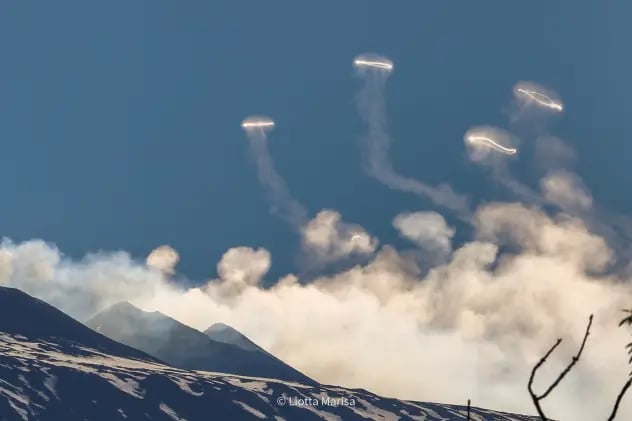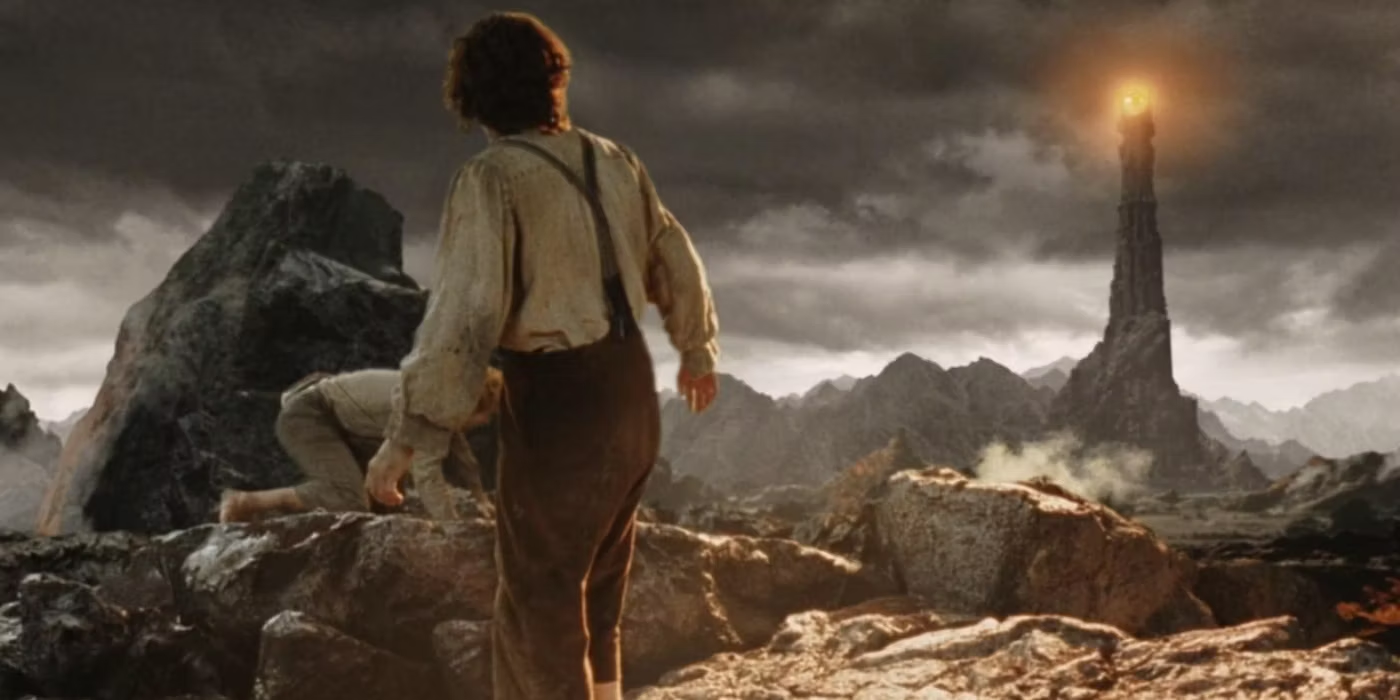Italy is home to pizza, pasta, gelato, and incredible historical sites and events that draw millions of tourists yearly. But did you know it’s also home to some of the world’s most active and incredible volcanoes?
While its most famous eruption, Mount Vesuvius, wiped out Pompeii in 79 AD, the country is also home to a super volcano called Campi Flegrei. Three other prominent volcanoes nationwide are Vulcano, Mount Stromboli, and the stunningly beautiful yet highly active Mount Etna.

Amazing site as gas rings form above Mount Etna in Italy. Image via Maria Liotta March 6th, 2024
Mount Etna, situated on the island of Sicily, is a stratovolcano with an elevation of around 3,357m. Not only does Etna produce long lava flows and strombolian activity (named after the constant eruptions of Mount Stromboli), but it’s also one of the rare volcanoes on the planet that produces a phenomenon known as ‘smoke rings.’
Despite being known as smoke rings, volcanoes do not emit smoke. So, what are these rings made up of, and how do they form?
Volcano expeditionist and chaser Geoff Mackley captures this amazing spectacle at Mount Etna back in June 2000.
I know what you’re thinking, and no, no trip to Mordor is required to rid the world of this ring. While not as dangerous as a trip to Mordor and Mount Doom, the process is nearly as complicated.

Frodo enters Mordor in the Lord of the Rings
This ring, or vortex ring, comprises rotating fluids and gases. In Etna’s case, these rings are primarily made from water vapor, carbon dioxide, and sulfur dioxide.
These rings form when gas bubbles merge and rise through the magma to create pressurized gas pockets. When these pockets explode, they explode faster than the outer edges of the conduit wall due to the friction resulting from contact with rocks. This process helps enable the development of a gas ring. However, the volcano’s conduit or vent must be circular to create this process.
Mount Etna produces a rare volcanic phenomenon.
Australia still has two areas that are considered volcanically active on the mainland. These consist of the McBridge Volcanic Province in North Queensland, home to one of the world’s longest lava flows, and the New Volcanic Province, situated through Victoria and southeastern South Australia.
Although these volcanic fields haven’t erupted for thousands of years, volcanologists expect them to erupt again one day on mainland Australia. Australia is also home to Heard and McDonald Islands volcanoes, situated southwest of Western Australia.
The Weather Guru Podcast. Australian Volcanoes - with Dr Heather Handley